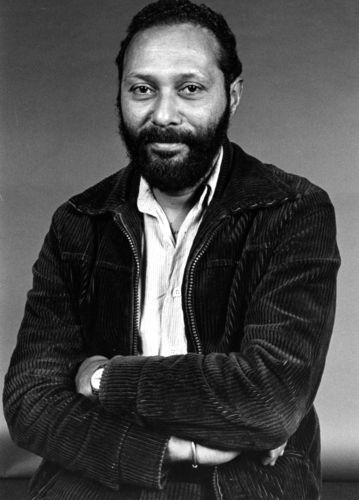Stuart Hall was a sociologist and theorist who co-founded the Centre for Contemporary Cultural Studies at the University of Birmingham he had a big influence in cultural practices as he helped introduce courses to do with it to a university background to educate. Inform others of power, race, religion and gender, giving a better understanding into how these titles apply everyday in our lives and can be perceived in multiple different ways. Ideology is a big part of these studies, questions and opinions are one of the things that keep it striving successfully as not everyone is gonna have the same opinion behind these class structures, this Centre is a safe place to communicate ideas and challenges.
In 1973 Hall introduced the idea of the encoding and decoding model which is a model of communication. The theory exclaims on the idea that producers encode media texts according to their resources and ideologies, these encodes are then decoded for consumers who consume these media texts, this can be in many ways such as; radio, Instagram, tv shows. It helps producers communicate with their audience in a simplified manner and as well as this they can convey messages to their audience which they can only understand if they’re following successfully. In example, the audience watching a tv show such as desperate housewives have to have a shared understanding with producers so messages can be followed and so the structure of the plot can continue.
So what is encoding and decoding? In simplified terms encoding could be known as the writing process of a system, the structure and the foundations for the result being the decoding which is the reading. The consumer understanding the message behind the writing, taking it all in. The theory is an mutual understanding between the relations of production and consumer reaction. An example of encoding and decoding in everyday life can be a simple as reading a word out of a book and saying it with voice.
Hall’s encoding and decoding model has four steps to successful communication and production. The first step is production, this is when the message in the process is encoded. The second step is how the message is going to be transmitted before final steps and this is called the circulation. The third step is the decoding step, known as consumption, this is how the audience is gonna be communicated to. The final step to the model is reproduction which is the reaction the audience will give to the message that is being communicated to them. All four of these steps will help shape the message successfully to the audience and will give a bigger impact to what is being communicated as the consumers will feel like they’re being spoken to more directly instead of broad if the message is understood.
Stuart Hall was a sociologist and theorist who co-founded the Centre for Contemporary Cultural Studies at the University of Birmingham he had a big influence in cultural practices as he helped introduce courses to do with it to a university background to educate. Inform others of power, race, religion and gender, giving a better understanding into how these titles apply everyday in our lives and can be perceived in multiple different ways. Ideology is a big part of these studies, questions and opinions are one of the things that keep it striving successfully as not everyone is gonna have the same opinion behind these class structures, this Centre is a safe place to communicate ideas and challenges.
In 1973 Hall introduced the idea of the encoding and decoding model which is a model of communication. The theory exclaims on the idea that producers encode media texts according to their resources and ideologies, these encodes are then decoded for consumers who consume these media texts, this can be in many ways such as; radio, Instagram, tv shows. It helps producers communicate with their audience in a simplified manner and as well as this they can convey messages to their audience which they can only understand if they’re following successfully. In example, the audience watching a tv show such as desperate housewives have to have a shared understanding with producers so messages can be followed and so the structure of the plot can continue.
So what is encoding and decoding? In simplified terms encoding could be known as the writing process of a system, the structure and the foundations for the result being the decoding which is the reading. The consumer understanding the message behind the writing, taking it all in. The theory is an mutual understanding between the relations of production and consumer reaction. An example of encoding and decoding in everyday life can be a simple as reading a word out of a book and saying it with voice.
Hall’s encoding and decoding model has four steps to successful communication and production. The first step is production, this is when the message in the process is encoded. The second step is how the message is going to be transmitted before final steps and this is called the circulation. The third step is the decoding step, known as consumption, this is how the audience is gonna be communicated to. The final step to the model is reproduction which is the reaction the audience will give to the message that is being communicated to them. All four of these steps will help shape the message successfully to the audience and will give a bigger impact to what is being communicated as the consumers will feel like they’re being spoken to more directly instead of broad if the message is understood.

